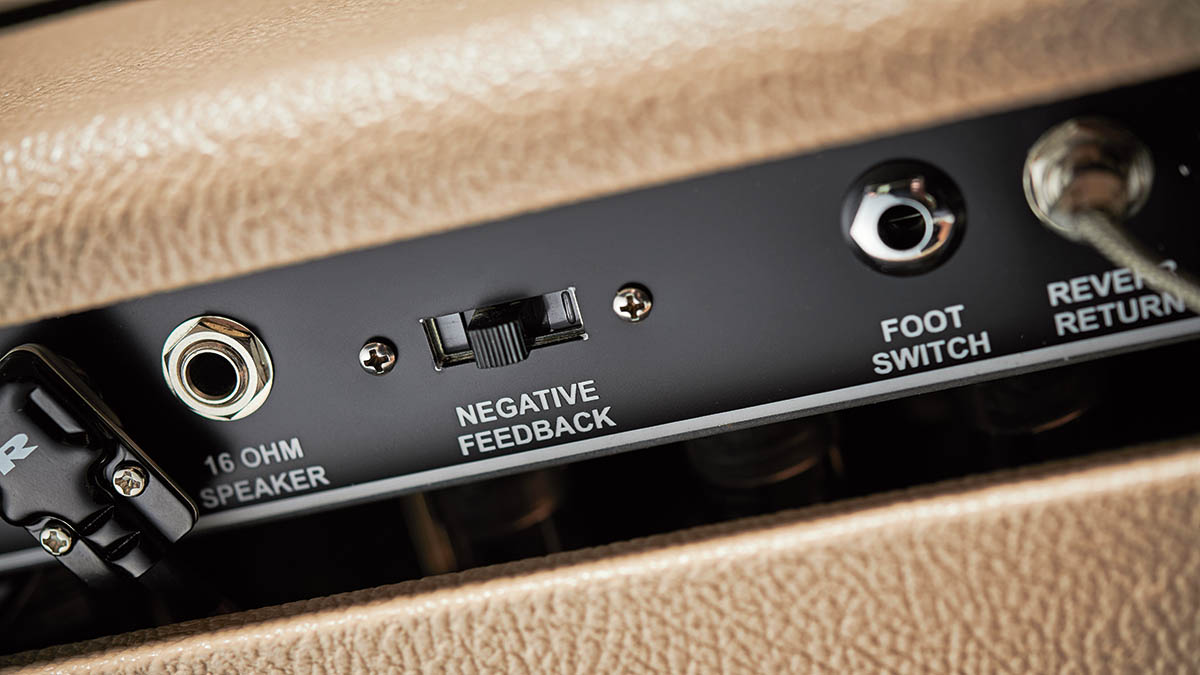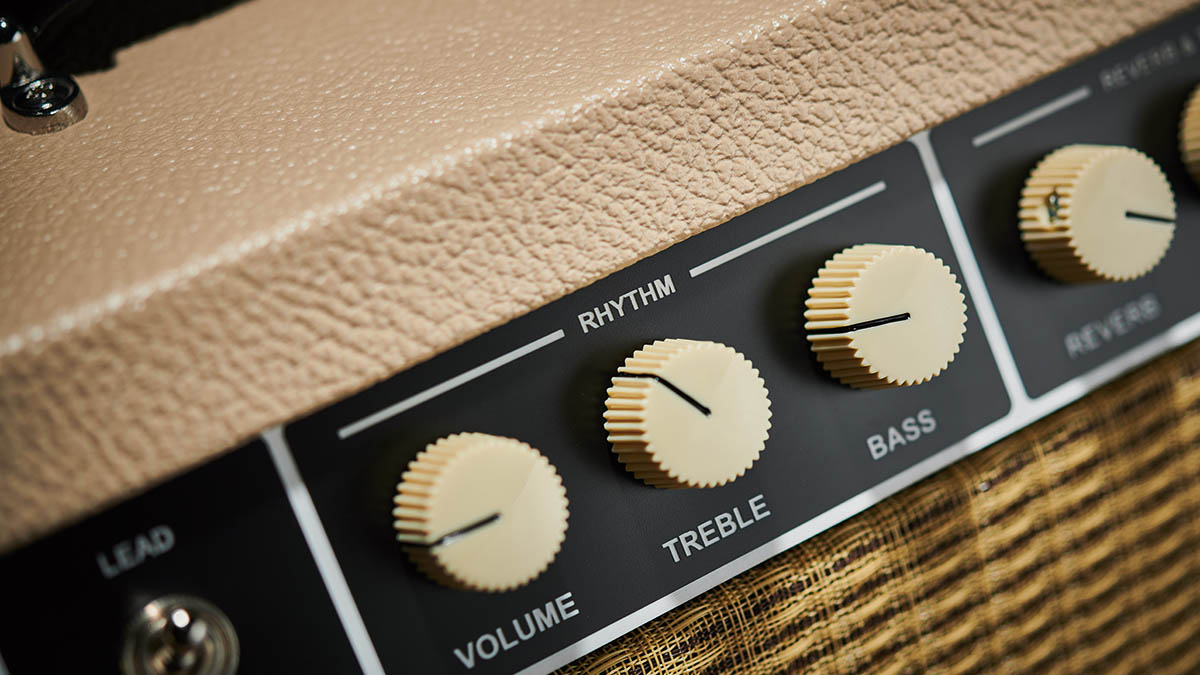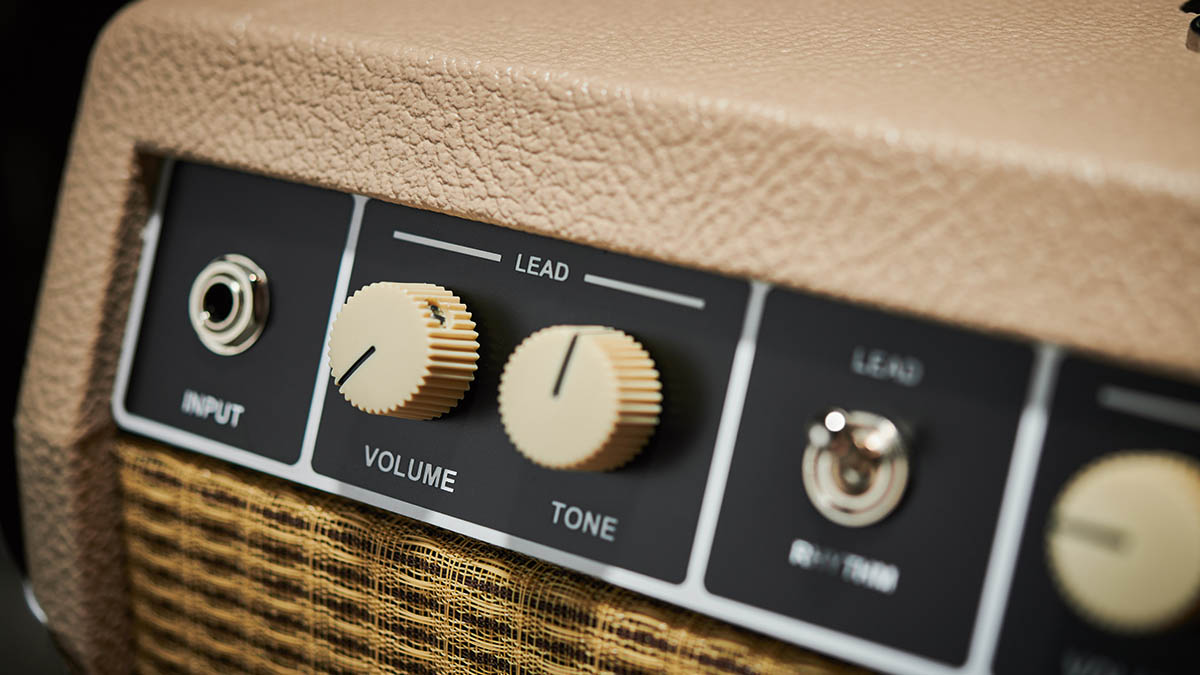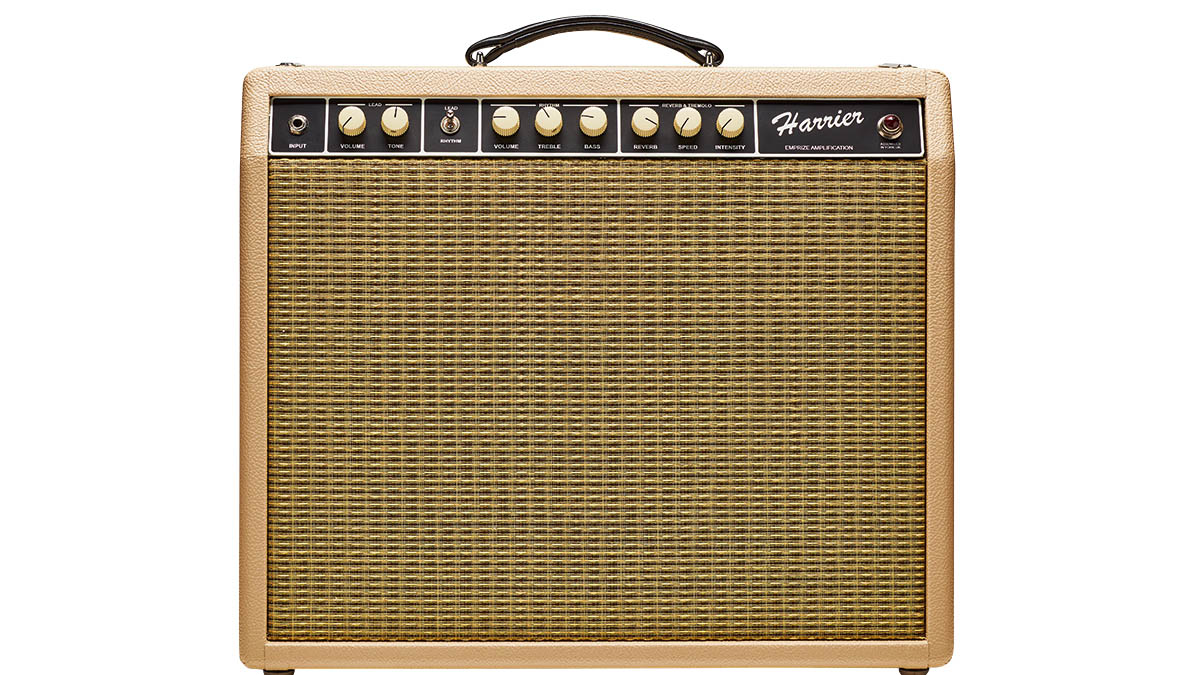
The British boutique builder’s market for guitars and amplification is in rude health, with many smaller operations becoming more visible as the pandemic abates. One of the better-known is Emprize, which is based in York.
The company is headed up by founder Philip Fisher, who learned his craft, like many amp builders, by working on pedals and amplifiers for local bands, before taking the plunge and building his own designs.
Emprize offers a wide range of small- to medium-sized combos and heads, most of which are inspired by classic Fenders from the 1950s yet with some unique twists, such as the one we’re looking at here, the Emprize Harrier.
It’s a compact 1x12 combo amp, housed in a 1960s Fender-style solid pine cabinet. Heavy-duty cream Tolex, a wheat speaker grille and cupcake control knobs add to the vintage vibe, giving the Harrier plenty of Fullerton mojo.
The electronics are housed in a steel chassis that supports generous mains and output transformers, as well as a choke and a smaller coupling transformer for the amp’s valve-powered spring reverb.

Speaking of valves, the Harrier has plenty of them, with three TAD 12AX7s and two 12AT7s in its preamp, driving a pair of TAD Red base 6V6 output valves and a GZ34 rectifier, for an output of around 20 watts. The loudspeaker fitted to our sample is the Eminence GA-SC64, designed in collaboration with legendary amp guru George Alessandro.
The Harrier’s circuit layout takes its cues from Fender eyelet boards, but it uses turrets that are mounted on a solid G10/FR4 baseboard for vastly improved reliability and longevity. The valve bases are neatly hand-wired, along with all the front- and rear-panel components.

We get two footswitchable channels: a Lead channel that’s based on Fender’s short‑lived but highly coveted brown-panel range from the late 1950s, and a Rhythm channel based on its later ’60s black-panel designs.
The Lead channel has two knobs for volume and tone, while the Rhythm channel has volume, treble and bass controls. Three more knobs control level for the valve-powered spring reverb, and speed and intensity for the optional bias modulated tremolo effect.
On the rear panel is an extension speaker jack and a three-way switch that varies the Harrier’s negative feedback, with a choice of Normal, Low or None. There’s a single power switch and a socket for the Harrier’s supplied single-button footswitch, which toggles the two channels via a relay. The overall standard of construction is exceptional; the Harrier not only looks good but has been built to last a lifetime.

Feel & Sounds
First off, the Harrier purrs into action with practically zero hiss and hum, a good indicator of a well-sorted circuit and layout. There’s no standby switch, though the ‘soft start’ of the valve rectifier means it isn’t really needed. After a few seconds’ wait for voltages to stabilise, we auditioned the Harrier’s two channels with a variety of guitars, including a PAF-equipped Les Paul and a ’90s American Standard Strat.
The brown panel-inspired Lead channel has a smooth, well-defined midrange, tight lows and strong highs, which can be tamed or emphasised by the wide-ranging tone control to quickly dial in humbuckers or single coils.
Those highs ensure you’ll always be heard, but the Harrier never sounds shrill or piercing. Pushing the volume control past the halfway mark reveals a delicious crunch that becomes increasingly compressed and vocal, even more so with the extra thrust of our Les Paul’s PAFs.

The Rhythm channel has more headroom and a slightly scooped midrange, evoking Fender’s classic black-panel amps from the mid-’60s. Non-tremolo Harriers gain a Midrange knob on this channel.
However, the lack of one on our sample wasn’t even noticed and the amp’s clarity and detail brought out every nuance of our Strat with remarkable articulation, string separation and just a hint of edge. It’s simply one of the best Fender-style clean sounds we’ve ever experienced.
The effects are equally well implemented here, with a wide range of speed and intensity from the tremolo to suit all tastes, while the reverb has plenty of depth without being too crashy – maybe not quite there for surf but ideal for everything else. We’d love to hear this amp with a full-on long pan reverb spring.
The three-position negative feedback switch progressively reduces speaker damping for a livelier response and an earlier break-up. Our preference was to leave it in the Normal position, but it’s nice to have a choice available for those occasions when a more vintage feel is needed.
There’s plenty of power from the Harrier’s loudspeaker, possibly too much to hear the non-master volume overdrive in some smaller venues, although teaming it with a good drive pedal easily overcomes this. The Harrier works really well with all kinds of effects – in particular, the Rhythm channel’s sparkling clarity makes it an ideal platform for pedalboard users.

Verdict
While the Harrier’s Fullerton influences are obvious, it’s far from being just another clone, with two distinctly different yet equally authentic voices and excellent onboard effects.
The sounds from both channels are superb: the Lead channel is great fun to play, especially when teamed with a decent overdrive pedal, while the gorgeous black-panel rhythm voice is among the best we’ve heard.
The excellent Eminence Alessandro speaker is an ideal match for these sounds, too, with plenty of volume on tap
It may be made in here York, but the Harrier captures that elusive Americana feel, adding atmosphere and authenticity to any US-influenced genre. The excellent Eminence Alessandro speaker is an ideal match for these sounds, too, with plenty of volume on tap, but if it’s not for you then Emprize has a list of alternatives to choose from.
We’d like to see the tremolo effect footswitchable as well as the channels, ideally with indicator LEDs on the pedal and front panel. But when an amp sounds as good as the Harrier, minor quibbles are easy to forgive.
Specs

- PRICE: £1,799 ($2,299 approx)
- ORIGIN: UK
- TYPE: All valve preamp/power amp with valve reverb/tremolo
-
VALVES: 3x 12AX7, 2x 12AT7, 2x 6V6,
1x GZ34 rectifier - OUTPUT: 20W RMS
- DIMENSIONS: 528 (w) x 241 (d) x 459mm (h)
- WEIGHT (kg/lb): 15/33.6
- CABINET: Finger-jointed solid pine
- LOUDSPEAKERS: 1x 12” Eminence Alessandro GA-SC64
- CHANNELS: 2, footswitchable
-
CONTROLS: Lead volume, lead tone.
Lead/Rhythm channel switch, Rhythm volume, treble, bass. Reverb level, tremolo speed, tremolo intensity - FOOTSWITCH: Single-button footswitch (supplied) toggles channels
- ADDITIONAL FEATURES: External speaker jack, 3-position negative feedback switch gives a choice of standard, low or no feedback
- OPTIONS: The tremolo circuit fitted to our amp is an optional extra; wide choice of cabinet covering and speaker options, contact manufacturer for more details
- RANGE OPTIONS: Non-tremolo version (adds a Rhythm channel Mid control) costs £1,599
- CONTACT: Emprize Amplification







